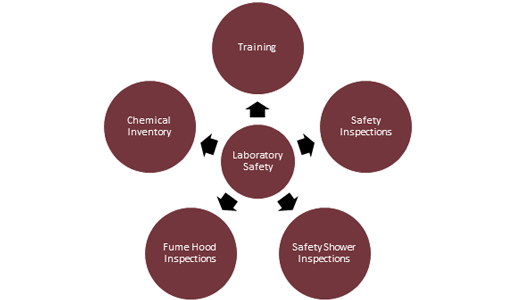Laboratory Safety
Lab Safety Guidelines
Laboratory Safety incorporates safety principles from a variety of areas, including fire and life safety, chemical safety, biological safety and radiation safety. The hazards encountered in a laboratory touch every field in safety and may be similar, although potentially greater in quantity or severity, to hazards encountered in the average home or work place.
Laboratory Safety is overseen by Environmental Health & Safety Office to ensure that safe practices are utilized and that state, national, and international safety standards or requirements are followed. This is accomplished through conducting laboratory inspections, testing of chemical fume hoods and other safety equipment, and providing general laboratory safety training. Also, the EHS Office provides assistance to lab personnel for any lab related issue, from making recommendations on how to work more safely to providing chemical monitoring.
Specific information on safe lab practices can be found in the TAMUG Laboratory Safety Manual. This document contains information on the different hazards that may be found in laboratories - including chemical hazards, physical hazards, biological hazards and radiological hazards - and how to minimize the risks associated with those hazards. The TAMUG Laboratory Safety Manual also provides information on training requirements for laboratory personnel, how to protect oneself when working in a laboratory, and how to plan for an emergency situation in the laboratory.
For specific questions relating to Laboratory or Chemical Safety, contact the EHS Office or review Texas A&M at Galveston’s Laboratory Safety Manual.